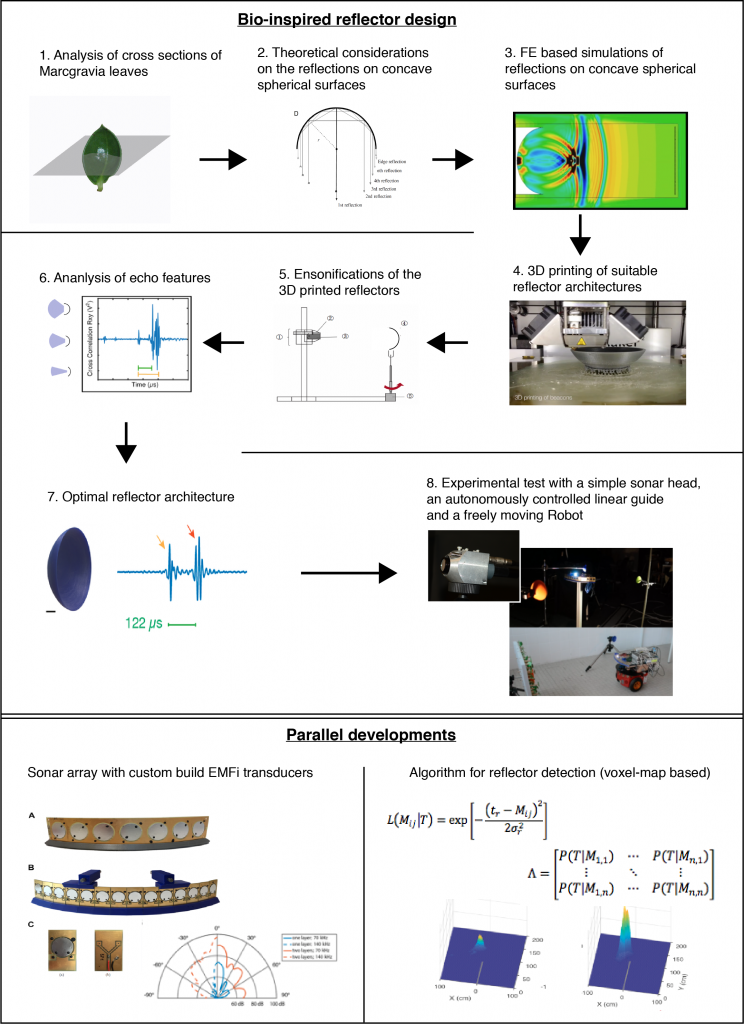06 Jan Bioinspired sonar landmarks for mobile robot navigation
In this project, which is funded by the Volkswagen Foundation we devolved sonar reflectors, which are inspired by the reflectors bat-pollinated plants. They evolved these passive acoustic signals to attract echolocating bats. Bio-inspired reflectors can be used as landmarks for autonomous sonar guided systems like robots and driverless cars. Find here our paper Bioinspired sonar reflectors as guiding beacons for autonomous navigation published in PNAS.

Fig. 1 Graphical overview of the study approach
We approached the design of the reflectors in a stepwise process:
- Measuring cross sections and 3D scanning of original Marcgravia dish-shaped leaves to investigate their curvature
- Theoretical considerations and calculations on sound reflections that occur on a concave spherical reflector
- Finite Element based simulations of sound reflections that occur on a concave spherical reflector
- 3D printing of various forms, sizes and depth of reflectors
- Ensonification of the different reflectors
- Analysis of the echo acoustic features of the different reflectors
- Determine optimal reflector form
- Experiments with a scanning sonar head, a linear guide and a robot
In a parallel process we developed a sonar array with optimized EMFi transducers and the voxel map based detection algorithm.
Data and code described in the paper are publicly available at https://github.com/GitRaSimon/BioSoR

